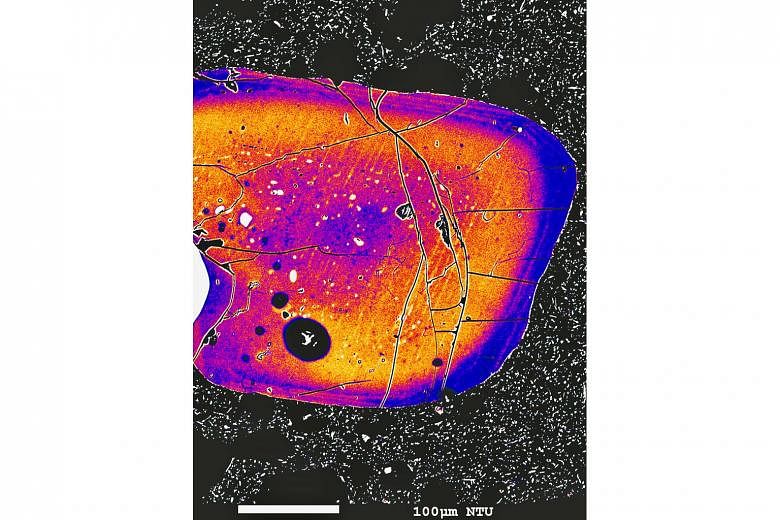Like wrinkles on our faces, the features of volcanic crystals can tell us about their lives inside a volcano. This is an image of a pyroxene crystal that was ejected from Mayon - one of the most active volcanos in the Philippines - in 1984.
Volcanologists at the Earth Observatory of Singapore, together with their partners from the Philippine Institute of Volcanology and Seismology, have been studying Mayon since 2008. Mayon erupts explosively every 10 years or so, placing nearly one million people at risk.
As scientists cannot directly access the interior of the volcano, they study the rocks and minerals that come out as lava to understand the processes that occurred before an eruption.
In this image, two features stand out: coloured zones and stripes. The zones of orange and purple reflect the amount of iron in the crystal - purple means a higher iron content and orange means a lower iron content. Crystals develop in these different zones when they move between different magma.
From the stripes, scientists can tell how long the magma was beneath Mayon before the eruption. This crystal's composition and size reveal that it resided in the magma chamber for tens, maybe hundreds, of years before the eruption.
The blurring between the purple and orange zones allows researchers to estimate the length of time the crystal stayed inside the different magma. Based on the blurring, they know this particular crystal moved between two different magma about 10 years before the eruption.
The ultimate goal of any volcanologist is to understand how a volcano works. If researchers know when magma is on the move, they can better prepare for an eruption and lives could be saved.

